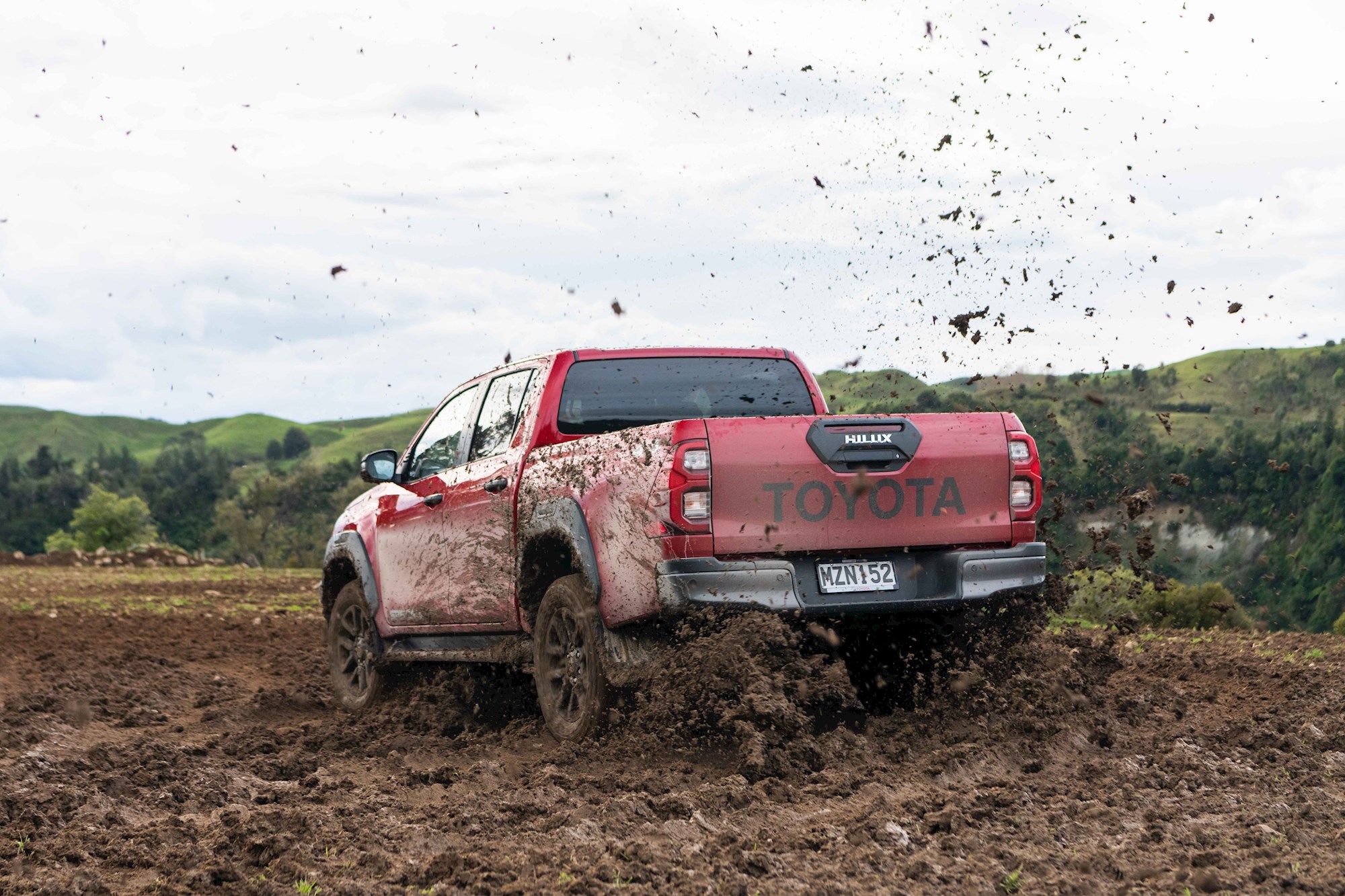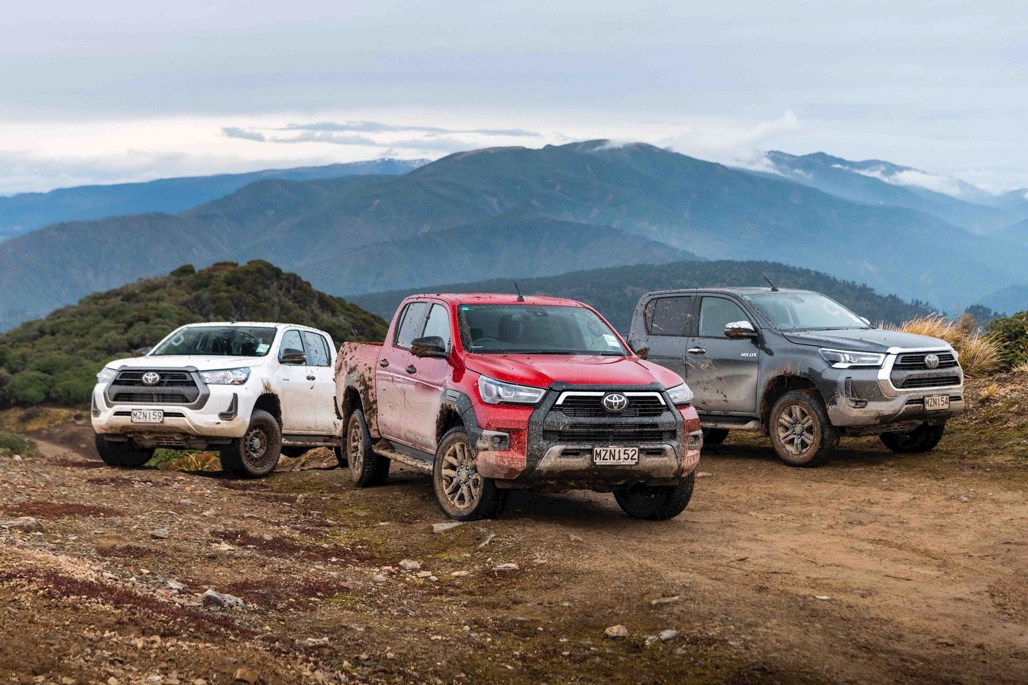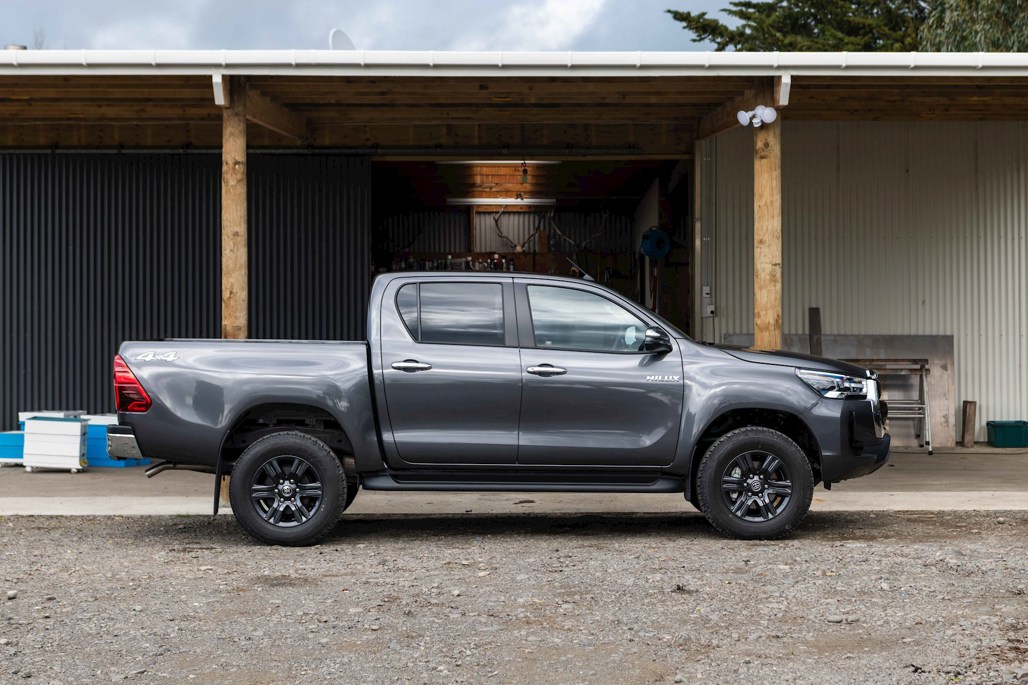Concerned about pickup-truck status? Judging by the sales mix of the New Zealand new-vehicle market, I think we all are.
So to really understand the pecking order of Toyota New Zealand’s 18-model-strong facelifted Hilux lineup, you’re going to have to get to know your noses.

There are four separate equipment grades across multiple body styles (or five if you count the NZ-specific Mako). And while they’re familiar – WorkMate, SR, SR5 and SR5 Cruiser – the looks are mostly new. WorkMate and single-cab models stay the same, but the grille on the “widebody” SR and SR5 models is now a massive trapezoidal shape that really emphasises the width of the vehicle; the SR’s is black, while the SR5 wears a chrome surround.
The SR has smaller headlights, for a “meaner” appearance says TNZ.
The same basic shape lurks underneath the SR5 Cruiser, but there’s a larger black mask and while the SR/SR5 grilles finish above the number plate, the Cruiser’s unique front bumper lets the angry face go all the way down. The Cruiser’s unique wheel arch flares also extend into the front bumper, incorporating the foglights.
If you’re thinking it’s all a bit Ranger-like, you’re probably right. A deliberately American pickup-style look has been key to the Ford Ranger’s success in NZ; Toyota says that the new Hilux design “takes its lead from the global Toyota truck family”.

What’s behind that new nose also begs comparison with Ranger. Hilux’s revised 2.8l turbo diesel has 15 per cent more power and 11 per cent more torque than the previous Hilux. More importantly, with 150kW it beats the Ranger’s 3.2-litre five-pot and joins the 2.0l biturbo Ranger in the 500Nm club. Still down on transmission ratios, though: Hilux is a 6-speed, while the biturbo Ranger has 10 gears.
We’ve driven the new model in double-cab SR, SR5 and SR5 cruiser variants – only with the automatic gearbox at this stage, although TNZ says it’s committed to continuing with the six-speed manual option - a point of difference from Ranger, which is now exclusively auto. There’s one downside with the manual, though: it’s limited to 420Nm.
There’s a marked improvement in refinement for the new model, and the extra torque is really evident in the low and mid-range. It’s a much more relaxed truck to drive on-road, with the automatic gearbox calibrated to make the most of that extra grunt.

Ride has been a sore point with Hilux compared with its rivals; for the new model Toyota has retuned spring rates, shock absorbers and bushes, as well as revised mounting points. It’s smoother on the blacktop than the previous generation, but still not class-leading.
Where there is a tangible chassis improvement is off-road. It lopes along through the rough stuff with a remarkably relaxed gait, partly thanks to some subtle technology upgrades. There’s a new electronic automatic rear limited-slip differential that endows Hilux 4WD with much more traction on loose surfaces without moving out of 2WD (a mechanical rear lock is also still standard on PreRunner 2WD and 4WD models).
The Downhill Assist Control is also much smoother in its operation – a more subtle application of brakes and a soundtrack that now whirrs more than it clunks.

Safety remains a strength, with the Toyota Safety Sense (TSS) package standard across the range. The five-star ANCAP crash test rating from 2019 still applies to this model.
Inside, the instruments have been sharpened up and the infotainment screen is now an 8in unit (previously 6 or 7in). Hilux also joins the growing list of Toyota models with Apple and Android phone projection.
One thing Toyota claims it isn’t actively pursuing is ute-market leadership. Hilux was famously number one in NZ for 32 years until 2015, when it was overtaken by Ranger. The gap is now large: year to date the Toyota has 3725 compared with the Ford's 4961.

But the key difference is that Hilux represents only 28 per cent of total Toyota sales, while Ranger is 65 per cent of Ford’s. Toyota is not just the larger brand – it’s a much more diverse one.
“We want to have as many models in the top 10 of the total industry as possible,” says TNZ chief executive Lala. “One of our goals has been to not have Hilux exceed 30 per cent of our total sales.”
“That helps us to achieve our [stated corporate] goal of a 30 per cent reduction in C02 from our actual levels of 2005 and we’re on track for that. We can’t achieve those targets if Hilux is over 30 per cent.
“If we want to sell more Hiluxes, we have to increase our total volume.”
TOYOTA HILUX
ENGINES: 2.7l petrol four (WorkMate only) or 2.8 turbo-diesel four
POWER: 122kW/245Nm (petrol), 150kW/420Nm (turbo-diesel manual), 150kW/500Nm (turbo diesel automatic)
GEARBOX: 6-speed manual or 6-speed automatic, RWD or part-time 4WD
ECONOMY: 10.4-10.9l/100km (petrol), 7.1-7.9l/100km (turbo diesel)
PRICES: $28,990-$58,990.




















